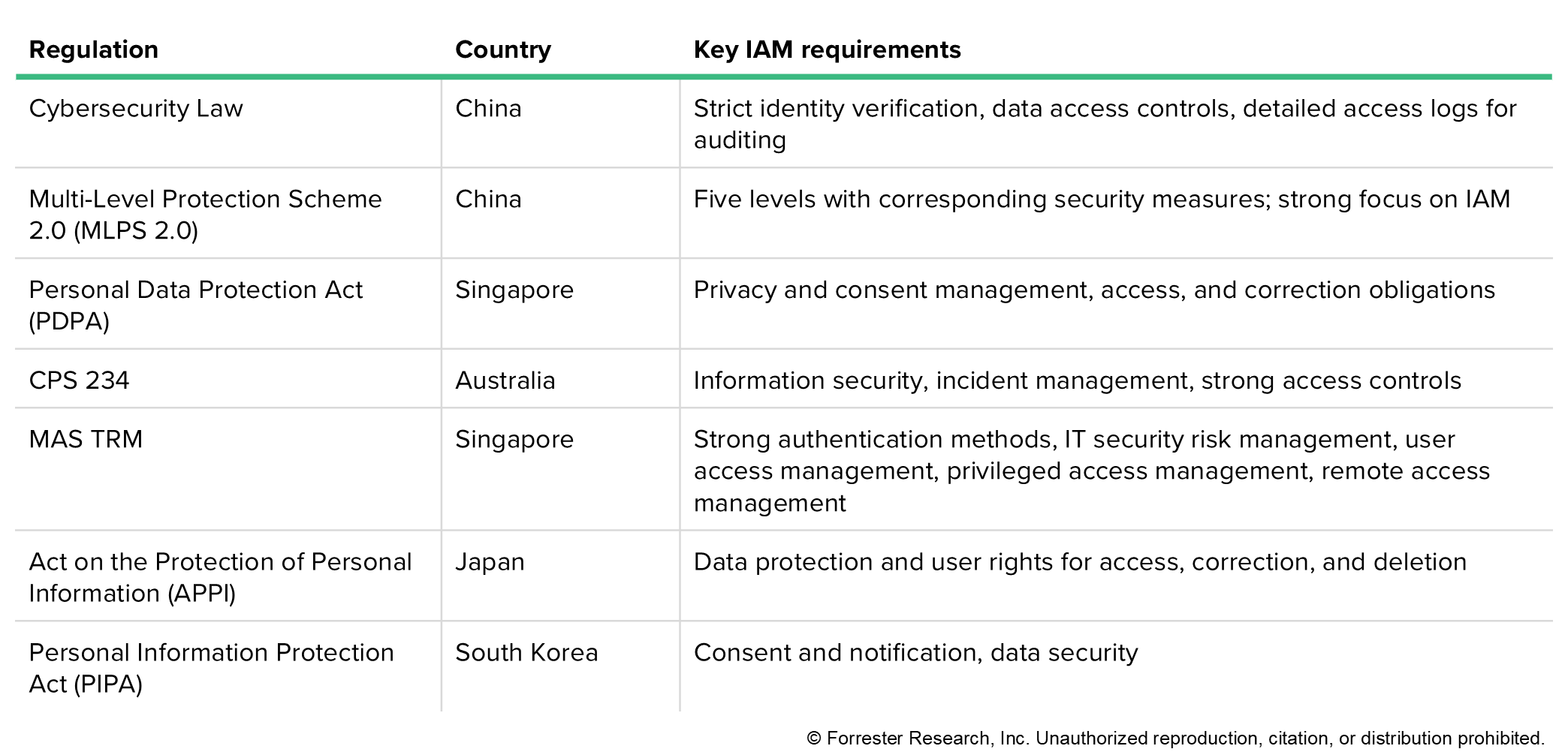What’s Hot For Identity And Access Management In Asia Pacific In 2025?
In my most recently published report, I discuss the key adoption drivers, technologies, and use cases for identity and access management (IAM) in Asia Pacific.
Organizations In APAC Will Increase Their IAM Spend
Forrester’s 2025 data shows that APAC technology decision-makers anticipate an increase in spend on customer and workforce IAM (CIAM and WIAM, respectively). This is due to:
- A growing need to compete on digital experiences. Effective IAM orchestration supports seamless and secure customer journeys. Customers benefit when companies leverage IAM solutions to enhance digital onboarding with features, such as biometric authentication, that provide convenience and security for building customer trust.
- Companies migrating to cloud and hybrid environments. IAM solutions help to facilitate smooth and secure transitions to cloud with features like cloud-native integrations, scalable identity management, and hybrid environment support. SaaS-based IAM solutions also offer rapid deployment and scalability to accommodate fluctuating workloads and user access needs.
- Risk from reliance on ecosystem partners. As organizations in APAC increasingly rely on ecosystem partners for cloud services, IT outsourcing, and digital business transformation, they run the risk of major data breaches. Effective IAM solutions help to mitigate risk through features like multifactor authentication, continuous monitoring, and least-privilege access.
- Fragmented regulatory requirements. Countries in APAC have varying IAM requirements (see figure below). Businesses that operate in multiple countries across APAC need IAM solutions that support compliance, data protection, and security to avoid penalties.

Consumer Behavior And Security Needs Are Driving CIAM Growth
While WIAM is relatively mature in APAC, CIAM is still rapidly evolving. Consumer behavior is driving this growth: Customers are engaging with brands across devices, platforms, and channels, making it challenging for firms to manage identities and protect data. Furthermore, high mobile adoption and tech-forward cultures in markets like India, China, and Southeast Asia are shaping APAC consumers to be more comfortable with biometrics than their Western counterparts. At the same time, increasingly sophisticated cyberthreats — such as deepfakes — are encouraging APAC businesses to adopt modern CIAM solutions that enhance security. This is especially crucial as APAC’s rapid digital growth, alongside its mobile-first mindset, makes it vulnerable to identity fraud and cyberattacks.
Select IAM Technologies Based On Your Use Case
Firms are adopting a variety of IAM technologies to address different use cases and challenges. We highlight some key technologies below:
- Unified identity governance. Many multinationals in APAC struggle with fragmented identity governance across multiple regions and cloud environments. Unified identity governance solutions can help businesses to standardize these identities across global operations while better complying with differing regulations across countries.
- Machine identity management. The rapid increase in cloud-native applications, APIs, IoT devices, and continuous integration and delivery pipelines has made machine identities the most vulnerable and fastest-growing attack surface. As generative and agentic AI become more widely adopted in APAC, we expect that businesses will leverage machine identity management solutions to manage identities and access.
- Cloud identity entitlement management (CIEM). CIEM is an essential aspect of IAM strategies in APAC, owing to the region’s swift adoption of cloud services. To manage the risk of overprivileged access and configuration errors, CIEM enforces least-privilege access, automates policy enforcement, and monitors entitlements.
- Decentralized digital identity (DDID). As more firms in APAC look to improve privacy and reduce reliance on centralized providers, adoption of DDID is gaining traction. By using DDID technologies, firms can reduce identity fraud and improve operational efficiency by reducing identity verification times.
- Single sign-on (SSO). APAC firms are prioritizing SSO for CIAM to better serve digital-savvy customers with seamless login experiences across channels and platforms. This is table stakes for firms that want to compete on digital customer experience and retain customers.
To explore these insights in greater detail — and learn more about specific IAM use cases and examples — read our full report, The State Of Identity And Access Management In Asia Pacific. Forrester clients can schedule a guidance session or inquiry with me for further sharing and discussion.
